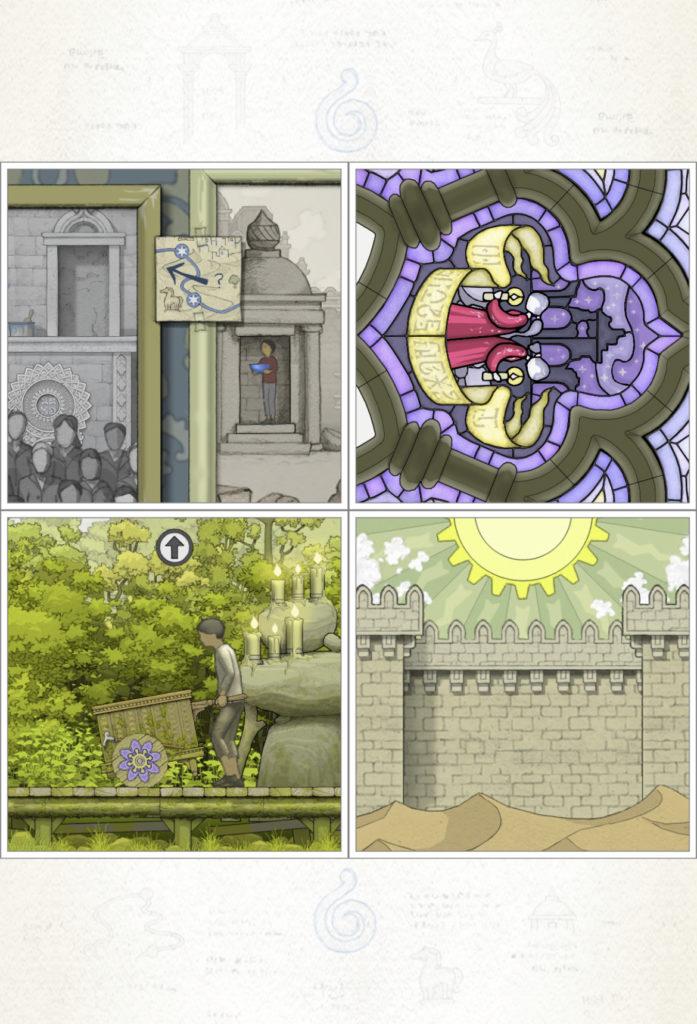Gorongoa is a puzzle game developed by Jason Roberts. It is available on various platforms such as Microsoft Windows, Nintendo Switch, iOS, Android, etc. The game is highly praised by puzzle lovers. The objectives of this game is solution (solving the puzzles) and exploration (exploring the narrative and the multidimensional fictional world in the game). There is no text narrative, but through the beautifully illustrated tiles, players solve puzzles while experiencing the embedded narrative. The main fun types supported by this game in my opinion is narrative and challenge. An intriguing narrative based in a strange world with mystical creatures draw me in and the challenging puzzles keep me on my toes.
Because there are no text hints, the game is very exploratory. I find myself looking at all of the tiles and trying out different things until something suddenly clicks and I find a relationship between certain scenes. The exploration process is very pleasant since the game art is so beautiful, and solving a puzzle is very satisfying and exciting. The puzzles while challenging, are designed well and come with various hints if players struggle. They also seamlessly fit into the world in the game and progresses the journey of the protagonist who is trying to find a mystical creature. The puzzle mechanics were somewhat familiar (mostly based on classic moving tile puzzles) but also very innovative. Each tile is a window to a portion of the world and supports different interactions in different scenes. When each tile go through certain interactions, they can be placed on top of or adjacent to one another to allow objects (including the protagonist himself) to travel across tiles and move forward in the story. One of the best moments of the game for me was the first time I encountered a puzzle where by placing and replacing tiles in the right order within a certain timeframe a ball could travel from one tile to another, and another until it breaks a jar which then releases a butterfly. It was the first puzzle that actually had an object move across scenes other than the protagonist and I thought it was a very nice surprise to figure it out.

The hint system in the game is subtle and minimal. It basically only consists of two types of hints: 1. some plus/minus signs and arrows to show how you can zoom in/out in the scene and move the scene horizontally or vertically. 2. a glowing circle on certain areas/objects in a title that can be clicked to zoom in specifically into that area or object. The first type of hints is given as soon as a tile is presented while the second type of hints appears only if the player seems stuck (tapping on a tile where there is no interaction available). However I felt that this hint system might not be enough for players who really get stuck. I remember getting a little frustrated while trying to solve one puzzle when the game was getting more difficult so the tiles included several puzzles at once. There were so many interactions that I knew would fit into a puzzle somehow but I didn’t know which one to start with. The hint system didn’t really help in this case since it always showed glowing circles on all of the interactions available in whichever tile I was trying to interact with. Getting stuck on a puzzle for too long may cause players to lose interest and abandon the game. I wonder if it would be better to have an option where players can explicitly ask for more hints if they get too stuck.



